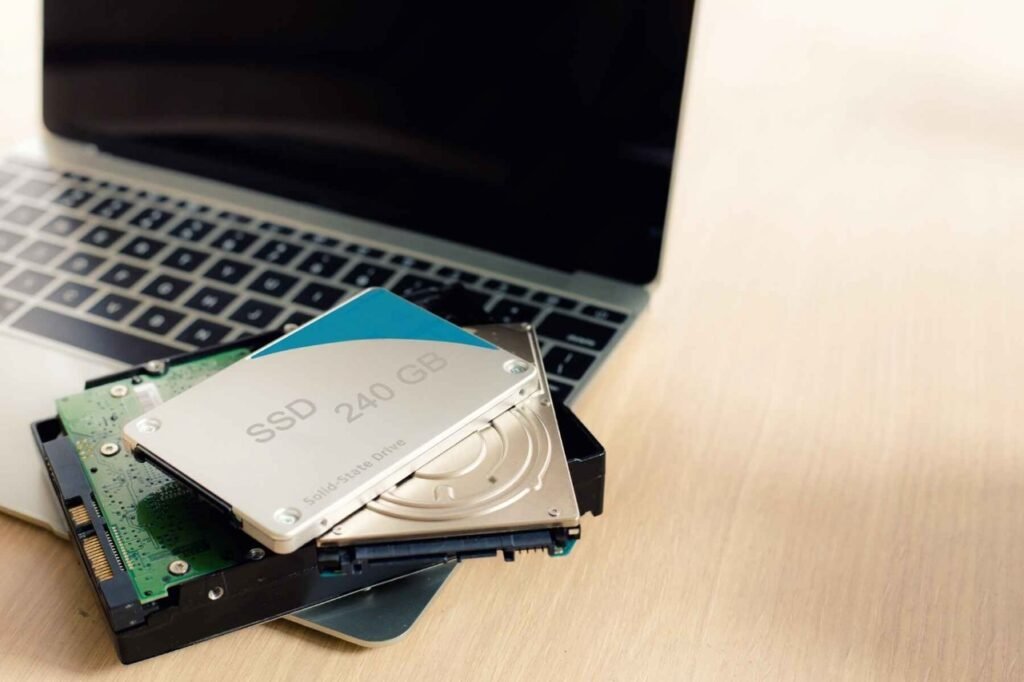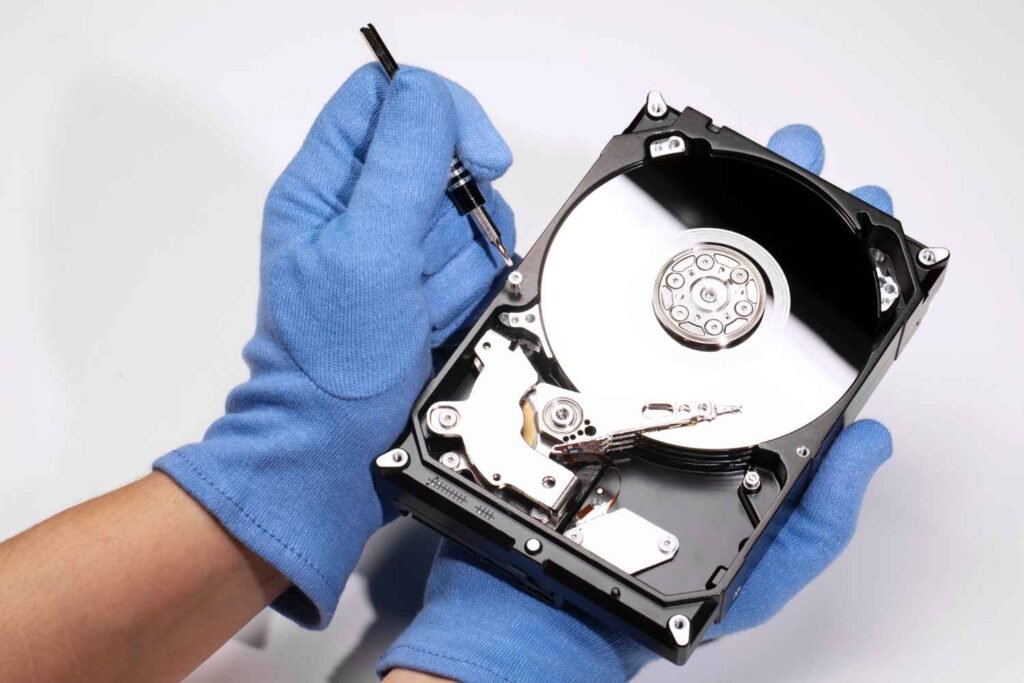SSD vs HDD Data Recovery: What’s the Difference? | LifeGuard Data Recovery India
Not all drives are the same — and neither is the recovery process. Understand the key differences between SSD and HDD recovery in India, and find out how LifeGuard Data Recovery tackles both with expert precision. What is an SSD and How Is It Different From an HDD? Definitions of SSD and HDD A solid state drive (SSD) is a storage device built with a flash memory and controller chips, while a hard disk drive (HDD) relies on the spinning magnetic platters and read/write heads. SSD data recovery India specialists emphasize that these different architectures mean entirely different recovery strategies. Flash memory vs magnetic platters SSDs store data in NAND flash cells, using electric charge. HDDs save bits via magnetic domains on rotating disks. Flash memory in SSDs can suffer cell degradation and complex mapping schemes, whereas HDD failure modes often involve physical platter damage or head crashes. Key differences: speed, durability, design, failure modes SSDs are offer far greater speed, low latency, and resistance to physical shocks compared with HDDs. HDDs are bulky, slower, and more prone to mechanical wear. HDD data corruption might arise from physical damage, platter scratches, or firmware glitches. SSD crash or SSD corruption typically derives from controller failure, encrypted firmware bugs, or TRIM wiping data—which is rarely a concern on HDD. Importance of understanding the technology for data recovery Knowing whether a drive is SSD or HDD, its interface (SATA, NVMe, M.2, PCIe), and knowing if TRIM is enabled are crucial steps. Effective SSD data recovery India requires understanding that SSDs may overwrite deleted files immediately, whereas on HDD, deleted file recovery is often feasible if the sectors remain intact. What Makes SSD Data Recovery More Complex Than HDD? TRIM command and data overwriting Modern operating systems together with SSD firmware include the TRIM command which deletes flash cells after file removal so deleted files become unrecoverable once TRIM operates. The complex nature of SSD recovery differs from HDD recovery because deleted sectors might stay intact on HDDs. Built-in encryption Many SSDs feature built‑in encryption tied to the controller or firmware. When encryption is enabled, recovering data without the key is extremely difficult even if the NAND packages are intact. Controller chip dependency SSD data is managed by complex controller chips. If the controller fails, mapping of logical addresses to physical NAND may be lost. This often requires firmware‑level recovery using vendor‑specific tools or in‑house lab tools. Firmware‑level recovery challenges Recovering corrupted firmware in SSDs is far more intricate than for HDDs. SSDs require firmware repair or re‑mapping to reconstruct file pointers and logical block addressing. In HDDs, firmware issues can often be mitigated by replacing board or logic modules. Chip‑off recovery and readout In severe SSD damage, chip‑off recovery may be necessary: physically removing NAND chips, reading raw data, decoding, and reconstructing files. This is expensive and time‑consuming compared to typical HDD data recovery, where imaging platters is the norm. Challenges in SSD Recovery Data not physically stored in one place (spread across multiple NAND stacks). Complex chip architecture requiring advanced tools and deep expertise. Limited success with standard recovery software—NAND must be decoded. Expensive tools needed for NAND recovery, firmware repair, and chip‑off readout. LifeGuard engineers encounter SSD crash and flash memory recovery problems routinely, so only lab‑level chip‑off or controller repair tools yield results in many SSD data recovery India cases. Case Study – Recovered Deleted Data from SSD Client background (industry, use‑case) A Pan‑India financial‑services firm using encrypted NVMe SSDs in desktop workstations experienced a firmware corruption event. One critical SSD failed entirely, rendering all user data inaccessible. Type of failure (e.g., firmware corruption, power failure) A combination of a failed firmware upgrade and power interruption caused the SSD drive controller to enter an endless boot cycle that prevents BIOS detection and blocks file access and operating system recognition in Windows and Linux. Tools & techniques used LifeGuard Data Recovery India engineers safely extracted the NAND chips in a cleanroom, performed chip‑off readout using proprietary board readers, rebuilt the controller map, and decrypted content using key retrieval from the intact controller chip. Timeframe for recovery From initial assessment to full data restoration took 7 business days. Within 48 hours came a detailed diagnostic report. Full recovery took additional time due to firmware mapping challenges. Data recovered successfully Over 95 % of customer’s critical data (financial spreadsheets, email archives, proprietary documents) was recovered. The recovery supported hybrid NVMe SSD recovery in India. This case study demonstrates LifeGuard’s mastery of SSD data recovery India using chip‑level repair, proprietary TRIM‑disabled tools, and cleanroom chip‑off procedures. How We Offer Expert Solid State Drive Recovery in India Certified engineers trained in SSD chip‑level recovery: Our team includes specialists certified in flash memory recovery and SSD controller firmware repair. Proprietary tools for TRIM‑disabled drives: Even when TRIM has wiped logical file pointers, our tools can access partially erased flash to reconstruct residual data. Cleanroom environment for hybrid SSDs: For chip‑off recovery and controller extraction we use ISO‑rated cleanrooms to avoid contamination. Support for NVMe, SATA, M.2, PCIe SSDs: We recover from all modern SSD types and brands across India’s tech landscape. LifeGuard Data Recovery India is a leader in solid state drive recovery. Need SSD Data Recovery in India? Request a Free Diagnosis We offer: Online quote form, WhatsApp, and direct contact options Free pickup from major Indian cities 24/7 emergency recovery service How to Fix SSD Not Showing in BIOS? Checklist: Check SATA/NVMe connection and reseat the SSD. Update BIOS firmware or set storage interface mode correctly (AHCI/PCIe). Attempt module reset using another system. Inspect for external power or jumper issues. If the SSD remains undetected, do not attempt further use—contact LifeGuard for cleanroom-level diagnostics. Solved – How To Fix NVMe SSD Not Showing Up? Common issues include: Incompatibility with older BIOS or missing NVMe driver. PCIe lane allocation errors. Partition scheme issues. We help rebuild NVMe SSD detection—and if detection still fails, our solid state drive recovery India team can


